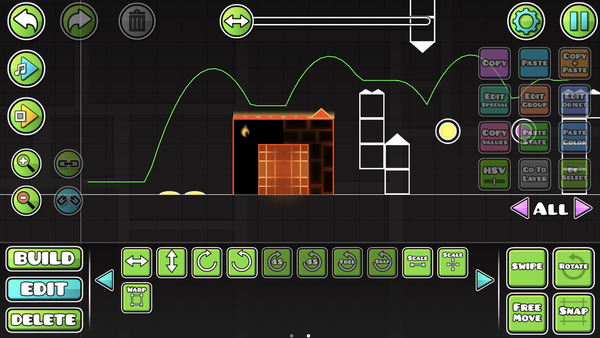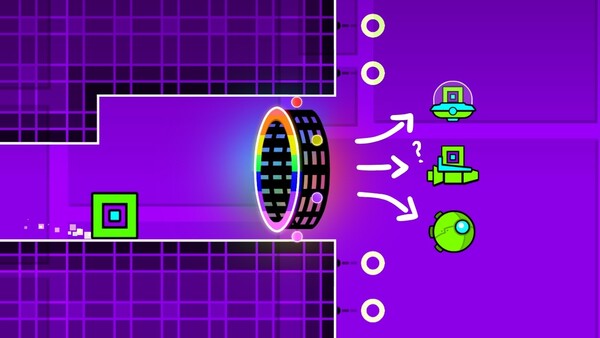Popular Now
Geometry Dash is a rhythm-based platformer known for its flashy visuals, intense levels, and unforgiving mechanics. But beyond the neon lights and pulsating music lies one critical gameplay element that separates casual players from elite creators and high-score chasers: timing precision. In this article, we’ll explore how timing mechanics influence every facet of Geometry Dash — from level design to player strategy — and why mastering it is the key to thriving in this high-stakes game.
Introduction
Geometry Dash isn't just about jumping over spikes. Success depends on reading the level’s rhythm, understanding its design, and executing movements with pixel-perfect timing. Timing precision affects how levels are built, how players adapt, and how the game's competitive community evolves. This article takes you deep into that world — revealing how timing makes or breaks a player’s journey.

The Foundation of Timing in Geometry Dash
Timing in Geometry Dash starts at the core of its mechanics.
The Role of the Beat
Each level in Geometry Dash is tightly synced to a musical track. Players must align their taps or key presses with beats that often dictate safe zones, obstacles, or gravity changes. These moments aren’t arbitrary — they're strategically placed to match the tempo, making rhythm an integral part of survival.
Reaction Windows and Milliseconds
Timing windows in Geometry Dash are brutal. Missing a jump by a fraction of a second spells failure. The engine records inputs on a near-frame-perfect basis, meaning that reaction times — often in the range of 100-250 milliseconds — are the difference between life and death. This requirement pushes players to master muscle memory.
Early-Level Training: Timing for Beginners
Most early Geometry Dash levels (like "Stereo Madness") serve as timing tutorials.
Learning Through Repetition
Levels teach players the basics of rhythm and reaction. Obstacles appear in sync with beats, helping beginners associate audio cues with specific actions. These initial lessons create the foundation for advanced timing skill.
Safe Patterns and Predictability
Early game levels feature predictable patterns that instill confidence. The timing demands here are forgiving, offering a valuable training ground. Players learn when to press and when to wait — an intuition that will be tested in harder levels.
Tightening the Screws: Intermediate Level Timing
As players progress, levels begin to demand more finesse.
Introduction of Dual Mechanics
Mid-game levels introduce dual modes, where two icons mirror or oppose each other. Timing becomes doubly complex: players must synchronize both avatars, or one will fail.
Speed Portals and Acceleration
Speed portals increase game velocity, compressing decision-making time. A portal that doubles speed halves the time players have to react. Intermediate levels test how well players retain timing accuracy under pressure.
Advanced Mechanics: Timing Under Pressure
In advanced levels, timing becomes hyper-sensitive and creatively cruel.
Mini-Portals and Hitbox Challenges
Mini portals shrink the player, altering hitboxes and jump arcs. This dramatically shifts the timing mechanics, requiring recalibration of jump distances and frequencies.

Moving Obstacles and Fake Outs
Advanced levels often feature moving platforms or deceptive triggers. These require reactive timing rather than predictive — meaning players must adapt on the fly.
User-Created Levels: A Laboratory for Timing Experiments
The community is at the heart of Geometry Dash’s timing innovation.
Custom Level Scripting
Using the level editor, creators script movement, sound sync, and invisible triggers. Levels like “Bloodbath” and “Sonic Wave” push timing boundaries through creator ingenuity.
Designing for Brutal Precision
Top-level creators use frame-perfect jumps, deceptive rhythm syncs, and erratic speed changes to challenge veteran players. These aren’t designed for casual fun — they’re timing trials by fire.
Extreme Demons: The Pinnacle of Timing Mastery
"Extreme Demons" are levels so difficult they require months (or years) to beat.
Frame-Perfect Inputs
These levels often demand frame-perfect precision, meaning input must occur on a single game frame (1/60th of a second). It’s where muscle memory meets robotic precision.
Example: “Tartarus” and Micro-Jumps
In “Tartarus,” players face razor-thin jump margins and near-invisible sync cues. The difference between success and failure is often invisible to the eye, detectable only to the trained ear or finger.
Sync vs. Desync: When the Music Betrays You
Not every timing challenge is fair — some are designed to deceive.
Desynchronization as a Design Choice
Some creators intentionally desync music and gameplay, tricking players into jumping on the beat when the obstacle demands otherwise. These moments play with perception, making players question their rhythm instincts.
The Psychological Effect of Desync
Desync levels like “Down Bass” force players to rely on visuals over rhythm, breaking the trust usually given to the music. This psychological twist is its own layer of difficulty.
Tactile Input and Timing Tools
How you play Geometry Dash affects your timing capabilities.
Mouse vs. Keyboard vs. Mobile
Timing precision is hardware-dependent. PC players may prefer a mechanical keyboard or mouse for lower latency, while mobile players contend with touchscreen delays. Each input method has unique timing windows.

Practice Mode and Slow-Mo Replay
Players can dissect timing windows in Practice Mode. Features like checkpoints and slow-motion replays help isolate trouble spots and improve precision — frame by frame.
Timing in the Speedrun and Showcase Community
Timing isn’t just about survival — it’s also about style and speed.
Speedruns and Timing Exploits
Speedrunners exploit precise inputs to skip parts of levels, using corner clipping or hitbox sliding. These moves require exact timing that must be executed reliably over an entire run.
Showcases and Flawless Execution
Players who showcase new Extreme Demons often emphasize consistency. Beating a level once isn’t enough — the true masters do it without a single mistimed jump. These players turn precision into art.
Training the Mind and Body: Improving Timing Precision
Timing precision is a skill that can be trained like any other.
Muscle Memory Drills
Players often drill specific jump sequences for hours, training their fingers to move independently of conscious thought. These routines help reduce reaction time and increase input confidence.

Tips for Building Better Timing
-
Use metronome tools to practice rhythm without relying on visuals.
-
Play different difficulty levels to build a diverse timing range.
-
Record and review inputs to spot micro-errors in timing.
Conclusion
In Geometry Dash, timing is everything. It’s the quiet engine that powers the game’s flash and fury — the element that distinguishes a casual player from a top-tier Demon-slayer. Whether you’re building levels, completing Extreme Demons, or showcasing your skills, precision timing is the skill you’ll always come back to. Mastering it means understanding rhythm, recognizing patterns, adapting to chaos, and practicing until your fingers move faster than your thoughts. In this pulsating world of neon and music, timing is your greatest ally — and your most merciless enemy.
















